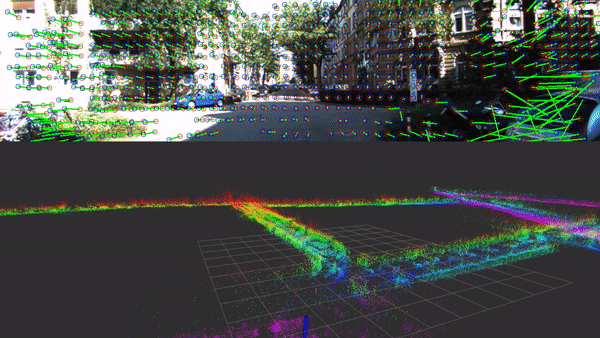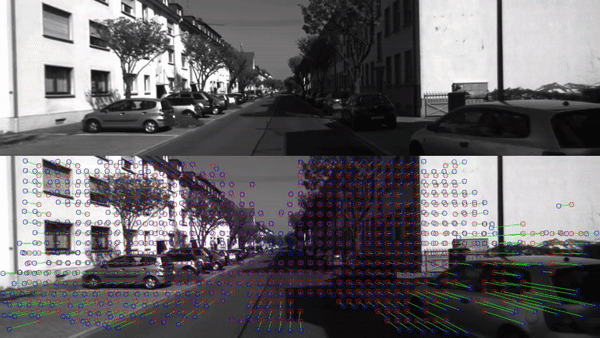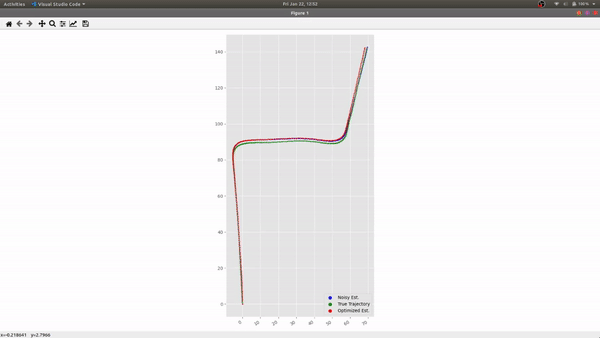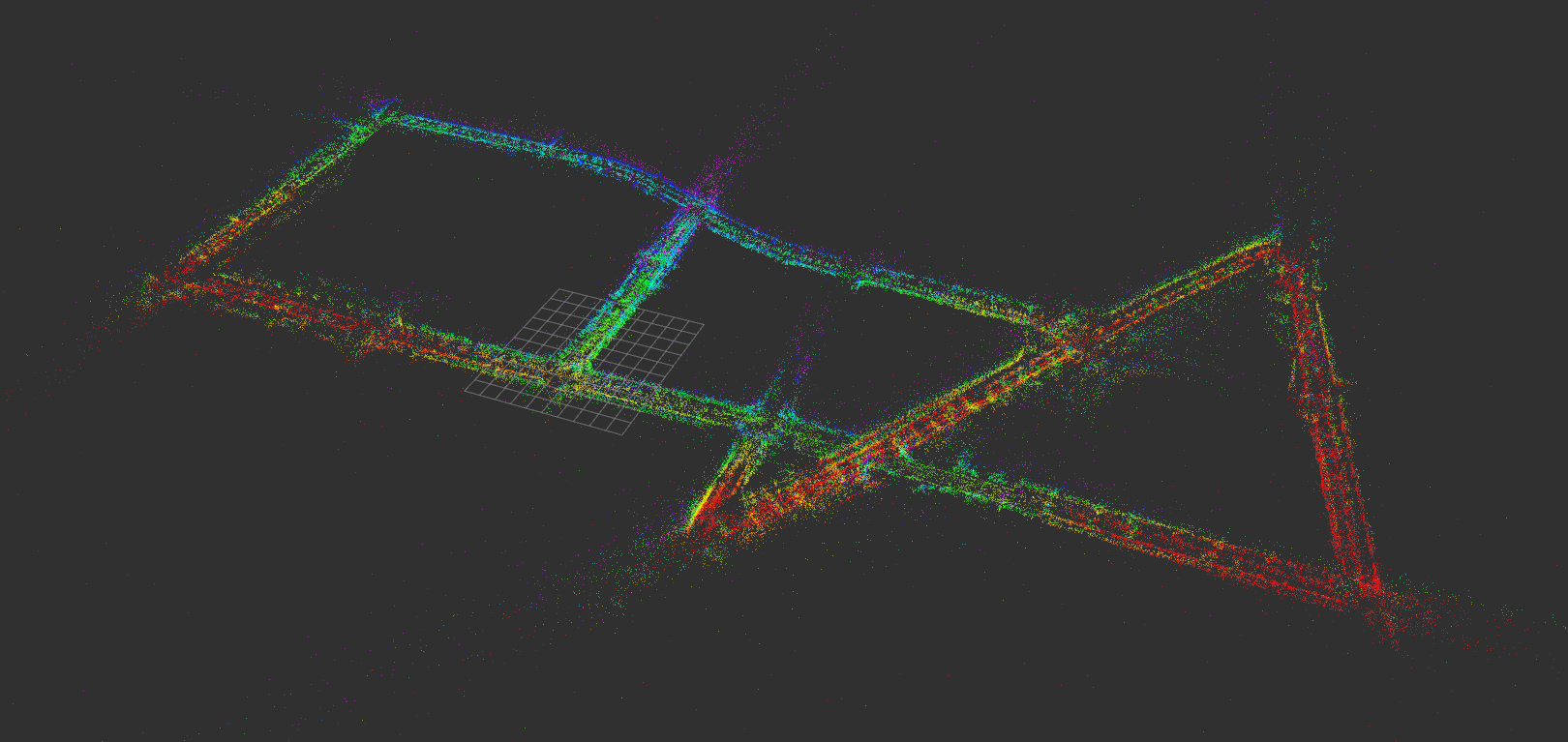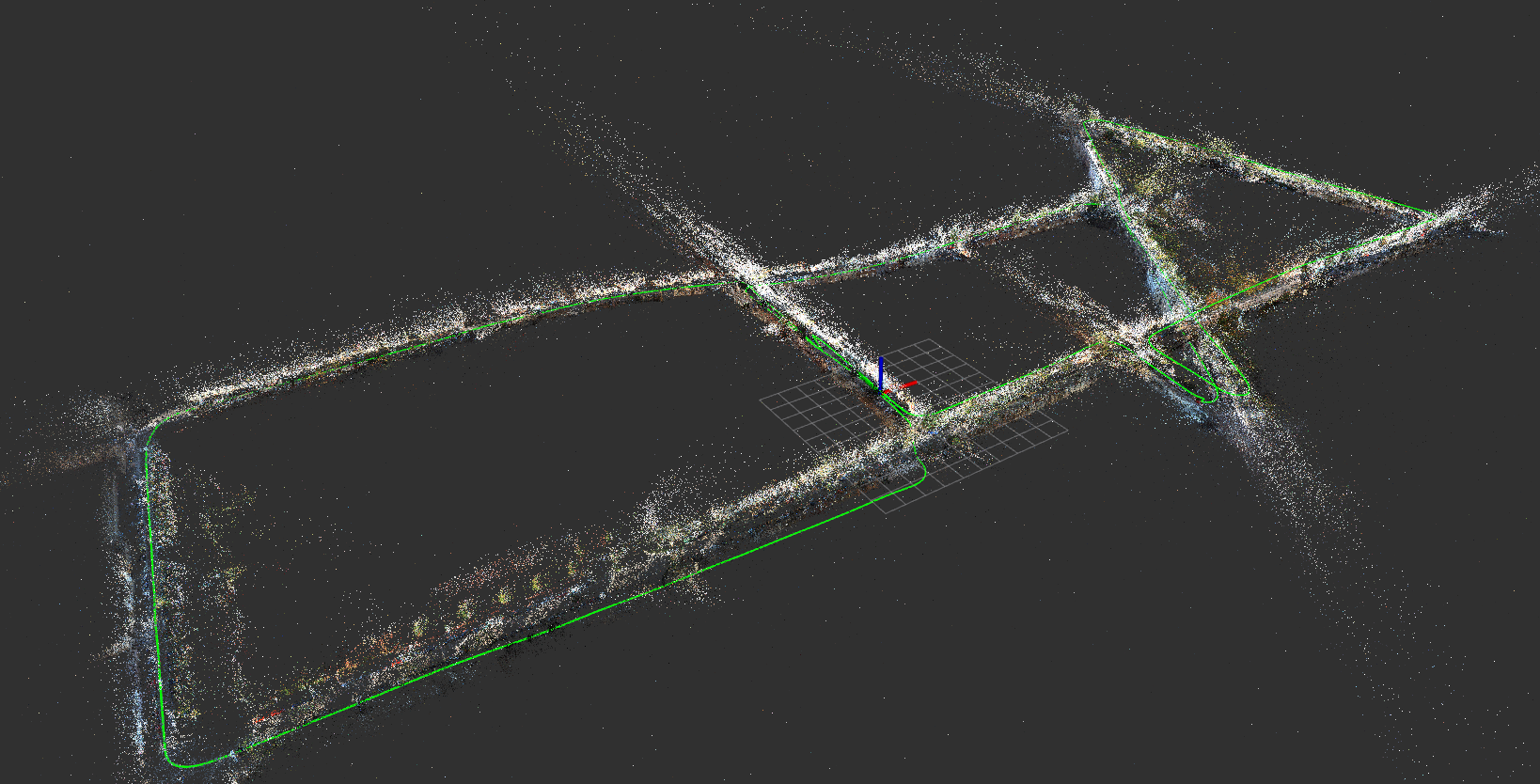Stereo RGB SLAM system on KITTI dataset using custom Dense feature sampling and 3D-2D PnP localization, loop closure and g2o pose graph optimization.
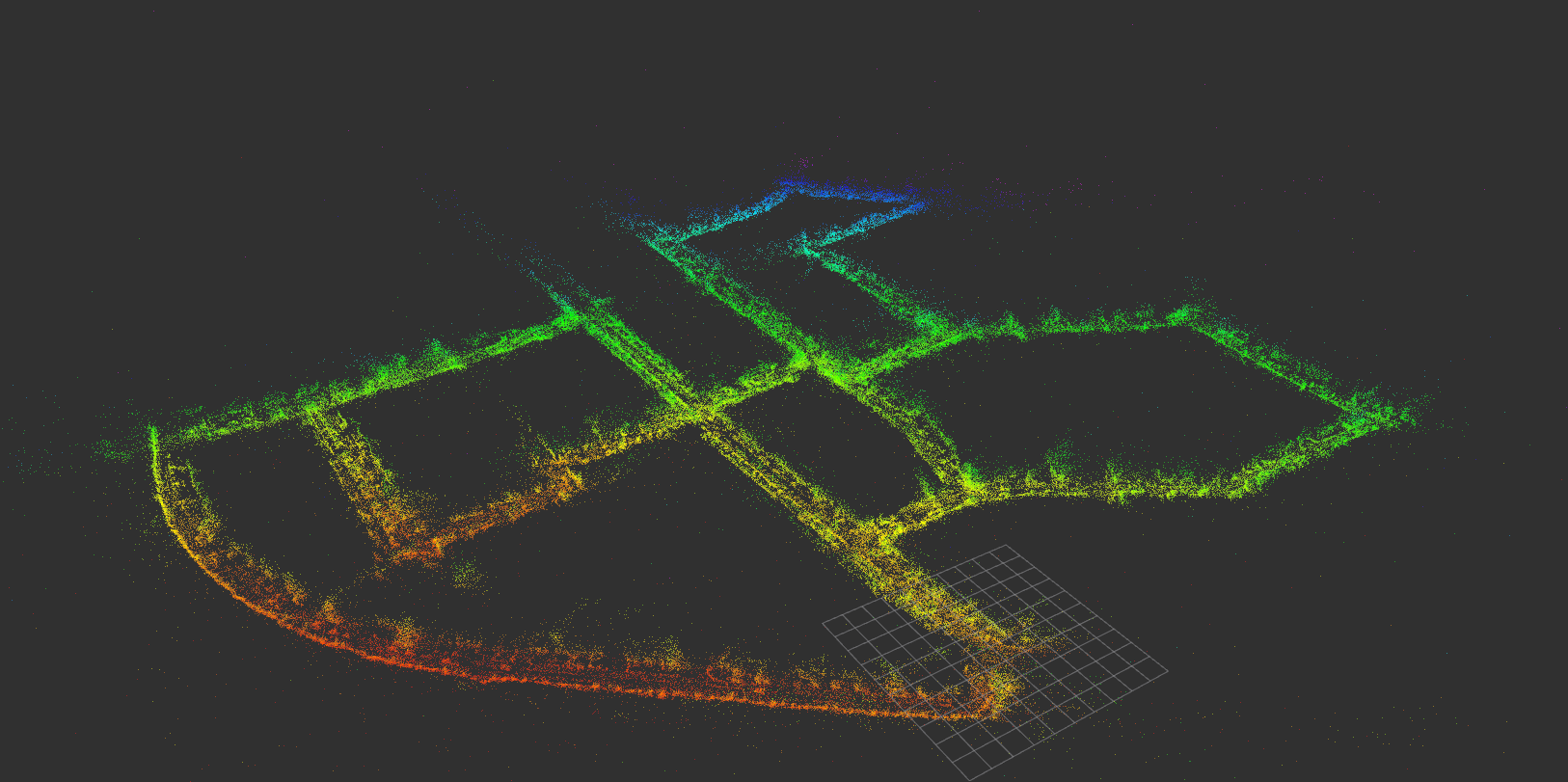 PS : i'm still working on this code so the codes may be subject to abrupt change
PS : i'm still working on this code so the codes may be subject to abrupt change
I've ditched feature detectors(ORB/SIFT/SURF etc) ad they often caused localization losses/siginficant drift in pose estimation or straight up slow even with multithreading. instead ive used a dense keypoint sampling method, to keep things simple.
ROS topics are published as :
- Pose :
geometry_msgs::PoseStamped - Trajectory :
nav_msgs::Path - Map :
sensor_msgs::PointCloud2published aspcl::PointCloud<pcl::PointXYZRGB>
- OpenCV & OpenCV Contrib : https://github.com/opencv/opencv
- PCL : https://github.com/PointCloudLibrary/pcl
- g2o : https://github.com/RainerKuemmerle/g2o
- DBoW2 & DUtils : https://github.com/dorian3d/DBoW2
And obviously ROS(duh).
You can compile this like any other ROS pkg, just clone it to catkin workspace and invoking the following from root catkin workspace.
catkin_make -j$((`nproc`-1))
source ./devel/setup.bash
Make sure you edit the cpp file to point to the dataset in your machine:
./src/VisualSLAM.cpp
and scroll to the main function to edit the paths. In adition to the datasets, you also need to point to the ORB vocabulary file forDBoW2 loop closure detection(also in the same place as dataset path). ive already provided vocabulary files for Sequences 00, 08, 13. respectively.
Then recompile and run(make sure you got roscore running in another terminal)
rosrun ros_slam visualSLAM
Im using an absolute case of loop closure which means the closure assumes the nodes it connects to has no translation/totation between them. This case is okay for examples such as KITTI where the vehicles end up at the same pose at loop closure.
The loop closure is detected using a modified version of DBoW2 based Templated DLoopdetector against a precomputed vocabulary. ./src/bagOfWordsDetector.cpp does just that, again edit the file to point to your data. Ive already computed and provided vocabulary files for KITTI sequences 00, 08, 13.
Note: This case of assumption of no motion for closure links is not the case where the motion model is more complicated such as EUROC MAV data where aerial vehicle can view the same frame at a later time with significant pose transform between them. In such cases we may have to re estimate poses between these closure links using PnP/Essential Matrix/Homography estimates with bundle adjustments. This part has been left for future work, feel free to add it for better performance.
The semi dense keypoint tracking is done using Lucas Kanade tracking with RANSAC thresholding between frames N-1 and N as standard matching isnt effective in dense keypoints and is shown as:
The pose estimation is not saved but ive written a lil function in ./include/monoUtils.h that can output the trajectory as a CSV file that can be viewed using Python and matplotlib as:
results can be viewed easily in rviz through the published topics. For example the results on sequence 13 of KITTI dataset:
Oh yeah also we publish pcl::PointCloud<pcl::PointXYZRGB> which means rviz can see the map in all its RGB Glory!..heres seq13 again
After mapping is done it can be saved as an RGB .ply file named map.ply, it can be viewed with any 3d rendering tool.
